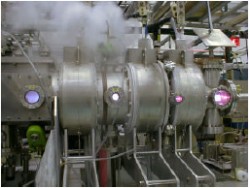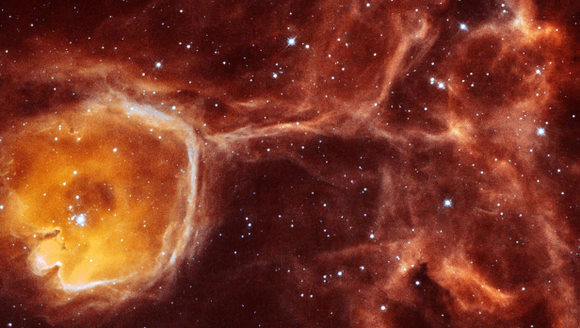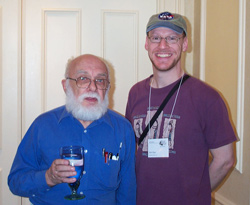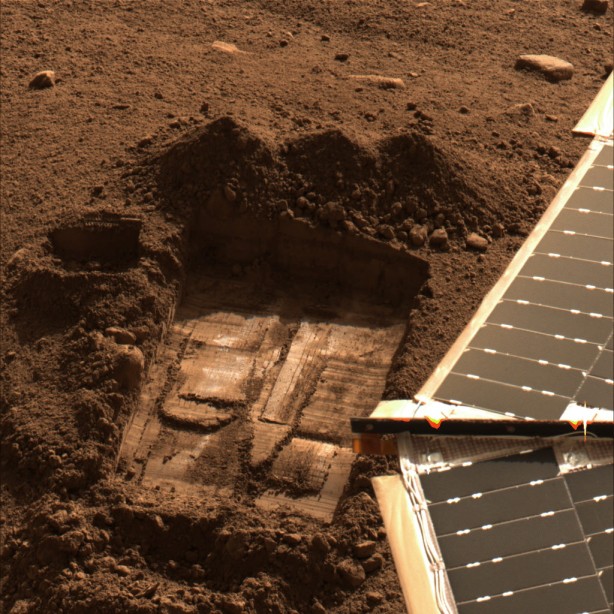[/caption]
NASA Administrator Michael Griffin has announced his intentions to send an advanced spaceship propulsion prototype to the International Space Station for advanced testing. The Variable Specific Impulse Magnetoplasma Rocket (Vasimir) is currently in an experimental phase, but Griffin hopes that a scale model will be ready for one of the remaining Shuttle-ISS missions before 2010. The Vasimir concept bridges the gap between conventional (fuel hungry, high thrust) rockets and economical (fuel efficient, low-thrust) ion engines. Vasimir achieves this by using an ingenious method of ionizing and heating a neutral gas fuel…
It sounds like an idea from the “let’s do something useful with the Space Station” department in response to recent criticism about the quality of science that is being carried out on the $100 billion orbiting outpost. Michael Griffin, attended the July 29th AirVenture show in Oshkosh and was asked about the status of NASA’s advanced space propulsion research. In response he outlined plans to begin testing the Vasimir on board the ISS within the coming years. This possibly means that Vasimir will undergo vacuum testing on the outside of the station. (NOTE: This is not a propulsion device for the Space Station itself, it will remain in Earth orbit for the rest of its years, regardless of the optimistic idea that it could become an interplanetary space vehicle.)

The Vasimir uses a gas, like hydrogen, as a fuel. When injected, the engine turns the hydrogen into a plasma (a highly ionized state of matter). Through the use of intense radio signals emitted from powerful superconducting magnets, the engine is able to produce this plasma and energize it. The hot plasma is then focused and directed by a magnetic nozzle which creates thrust. The Vasimir turns out to be a very efficient way to get optimal thrust from minimal fuel (a quantity in rocket science known as “specific impulse”) through ionizing a fuel and accelerating it with a magnetic field. Such a technology is far more efficient than conventional rockets (as it uses less fuel) and provides more thrust than ion engines.
At the moment, the Vasimir looks as if it is in a “test-bed” phase of development, resembling something too large and unwieldy to be put into space, but Griffin is hoping a scale model may me taken to the ISS, possibly by one of the remaining Shuttle flights before 2010.
The engine itself is being developed by the Ad Astra Rocket Corporation and NASA signed a co-operation agreement with the company in 2006 in the hope of working on large-scale testing of rocket products. Naturally, Vasimir testing on board the Space Station would be of tremendous value in the research of this technology (but there is no mention that the Vasimir could be used as an ISS propulsion device, shame really).
Source: Flight Global










